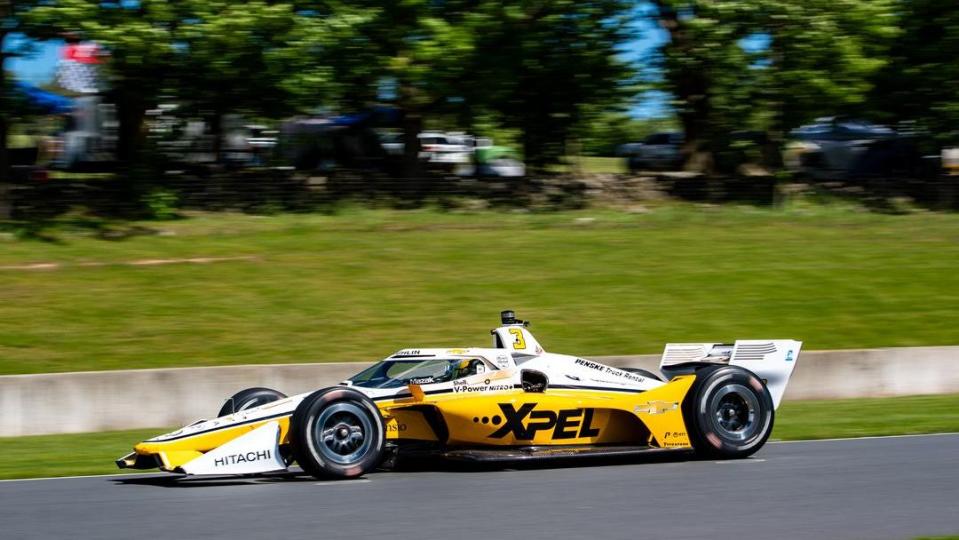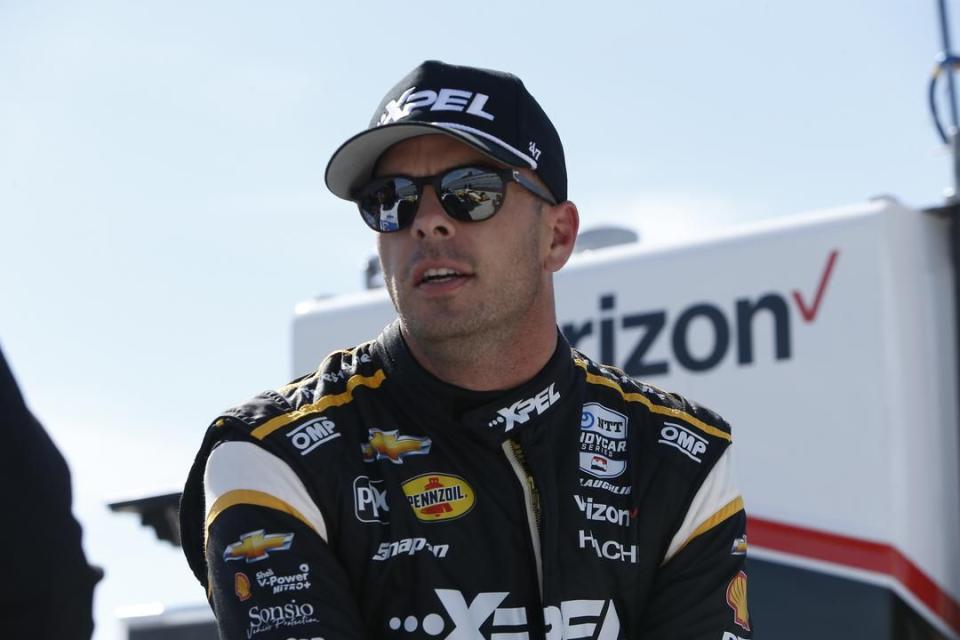XPEL Making Slick Impact on IndyCar, Team Penske

IndyCar is the XPEL biggest—or at least most visable—push into the motor racing world.
The company is in its second year of having its name splashed all over the sidepod of the No. 3 Team Penske Chevrolet of Scott McLaughlin for select races.
XPEL products are on the shelves throughout the garages of Team Penske and others in the IndyCar paddock.
Michael Mayall and the sales crew at XPEL have quite a challenging job on their hands when it comes to explaining how the company hopes to make its mark in the NTT IndyCar Series.
After all, they're pitching a product that is virtually invisible. It's also a product that just might help an IndyCar go faster.
That's pretty slick.
Exactly what the folks at XPEL want you to say.
Mayall is vice president of corporate development at XPEL, a San Antonio, Texas-based company that produces window tints, paint protection film, ceramic coatings, and protective screens for just about anything you can imagine. Hence, the company's motto, "Protect Everything."
These days, IndyCar is the company's biggest—or at least most visable—push into the motor racing world. The company is in its second year of having its name splashed all over the sidepod of the No. 3 Team Penske Chevrolet of Scott McLaughlin for select races. XPEL products are on the shelves throughout the garages of Team Penske and others in the IndyCar paddock.

XPEL was the title sponsor for the XPEL Grand Prix at Road America IndyCar race June 9 in Elkhart Lake, Wisconsin. That was a race that saw Team Penske's Will Power, Josef Newgarden and McLaughlin finish 1-2-3.
Those kinds of finishes will get attention.
"The film is used on the undercarriage parts," Mayall said. "They use our film on the underbellies to keep that protected and keep it from being nicked or whatever. They are using the consumer-grade film as far as thickness goes.
"Team Penske, they use both our ceramic coating product then also also our ceramic spray and our detailing spray. They use all that—one, in order to keep it looking Penske perfect, but also to provide that maximum slickness."
The products also can help on the human side of the IndyCar success equation though use of heat reduction film on the car's aeroscreen that nearly surrounds the driver compartment. XPEL's window film attaches to areoscreen windshield before teams apply their tear-offs—films that are peeled off during the race to keep the driver's window clean and clear as possible.
Myall said XPEL saw an opportunity through the see-through tear-offs.
"The tear-offs don't really offer you any kind of solar benefits," Myall said. "What happens is that you've got this big fishbowl affect, with a lot of heat that's pouring through."
Myall said that a summer race at Nashville was a true eye-opener:
"Nashville, it was so miserable hot," Myall said. "I thought it was mind-blowing (IndyCar) chose to race there the month they did. One time there was a red flag, and they all came in, and the officials wouldn't let them get out of their cars.
"I went down to the grid, and I'm watching these guys, and you can just see them dripping with sweat. I thought for sure one of someone was going to pass out. They sat there forever.
"I'm looking at the sun pouring through the glass, and of course, this is where my mind goes. There's got to be something, every little bit helps. I got to chatting with the team—and I'm always trying to look for certain ways we can bring more value as a partner to the racing team. We got to talking about a couple of different options. We have films that are virtually clear, but then if the sun were to be beaming through, you'd feel a difference.
So we sent them a couple of products and they started testing them. It took a little bit of time, but the next thing you know, I get a note saying that the product has been approved by IndyCar—I believe it's the XPEL XR Plus 80—for application on the windscreens now."
Ron Ruzewski, managing director at Team Penske, was one of the first to embrace the technology on the IndyCar side. Ruzewski helped XPEL gain approval of their windshield product for use in the series.
"There was obviously an opportunity," Ruzewski said. "The cockpits get warm. You've got glass, right, and it's no different than your normal car. I talked with IndyCar, and I know they don't want tint because in an accident, someone gets hurt, the safety crew can't see you. I asked for some samples, asked if they had something that's high in reflectivity to keep the heat out, but not be dark."
Currently, the XPEL product is being used between a base layer on the windshield and the tear-offs.

"There's some things that I'd like to see in the future, which we can help to develop their product," Ruzewski said. "We're running their XR Blue product. It's the least tint, but still high in all the other properties.
"It's hard for the drivers to feel a difference, but we can sense some areas we had some temp stickers and it was a little bit better. It's just like with you car. My wife has it. Before we even met these guys, we did it. And I was like, 'man, this is the best thing ever. The dashboard is not burning up.' It's the same concept. Anything that reflects heat is a benefit."
XPEL products are used "strategically" on the Penske Indy cars, says Ruzewski.
"We're trying to give ourselves an advantage wherever we can," he said.
Clearly, the XPEL difference at Penske goes beyond just the windshield. It means meticulously covering even screw holes and rivet holes on the car.
"Team Penske, they do use both our ceramic coating product then also also our ceramic spray and our detailing spray," Mayall said. "They use all that—one, in order to keep it looking Penske perfect, but also to provide that maximum slickness."
Myall thinks XPEL products are just scratching the surface—more to the point NOT scratching the surface—on its impact in the sport.
"The next step for me that I'm looking to achieve is putting these things in a wind tunnel, with one car ready to go and another car outfitted with our ceramic coating to see what that's going to look like from a resistance standpoint, to see if we can improve there. You would think that aerodynamically we would be able to have that that additional slickness, that we would see improvement there with just the air gliding over it."
In addition to parts protection, are we talking the potential of improved fuel economy to boot?
Myall smiled.
"Let's just say, it works."

 Yahoo Autos
Yahoo Autos 